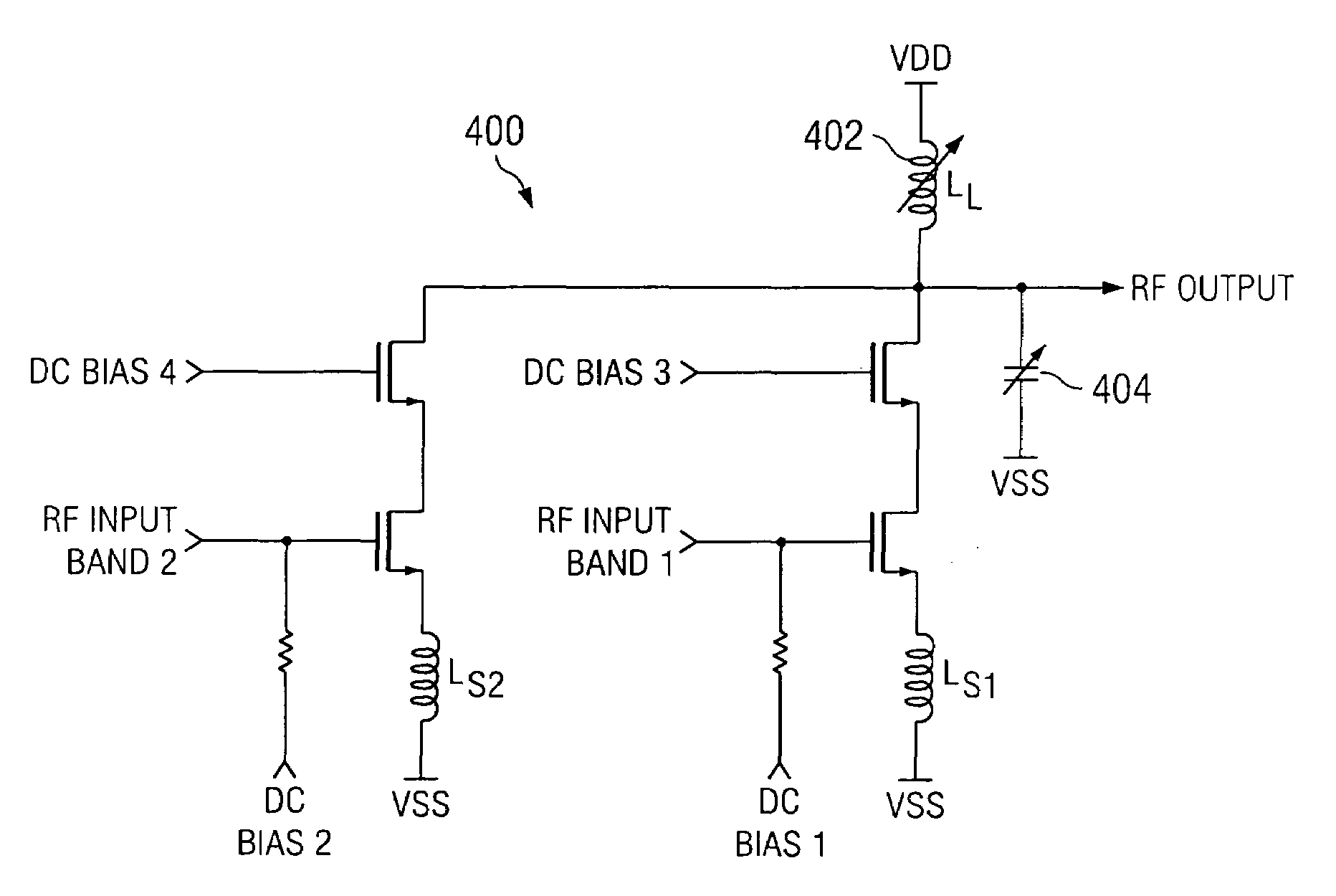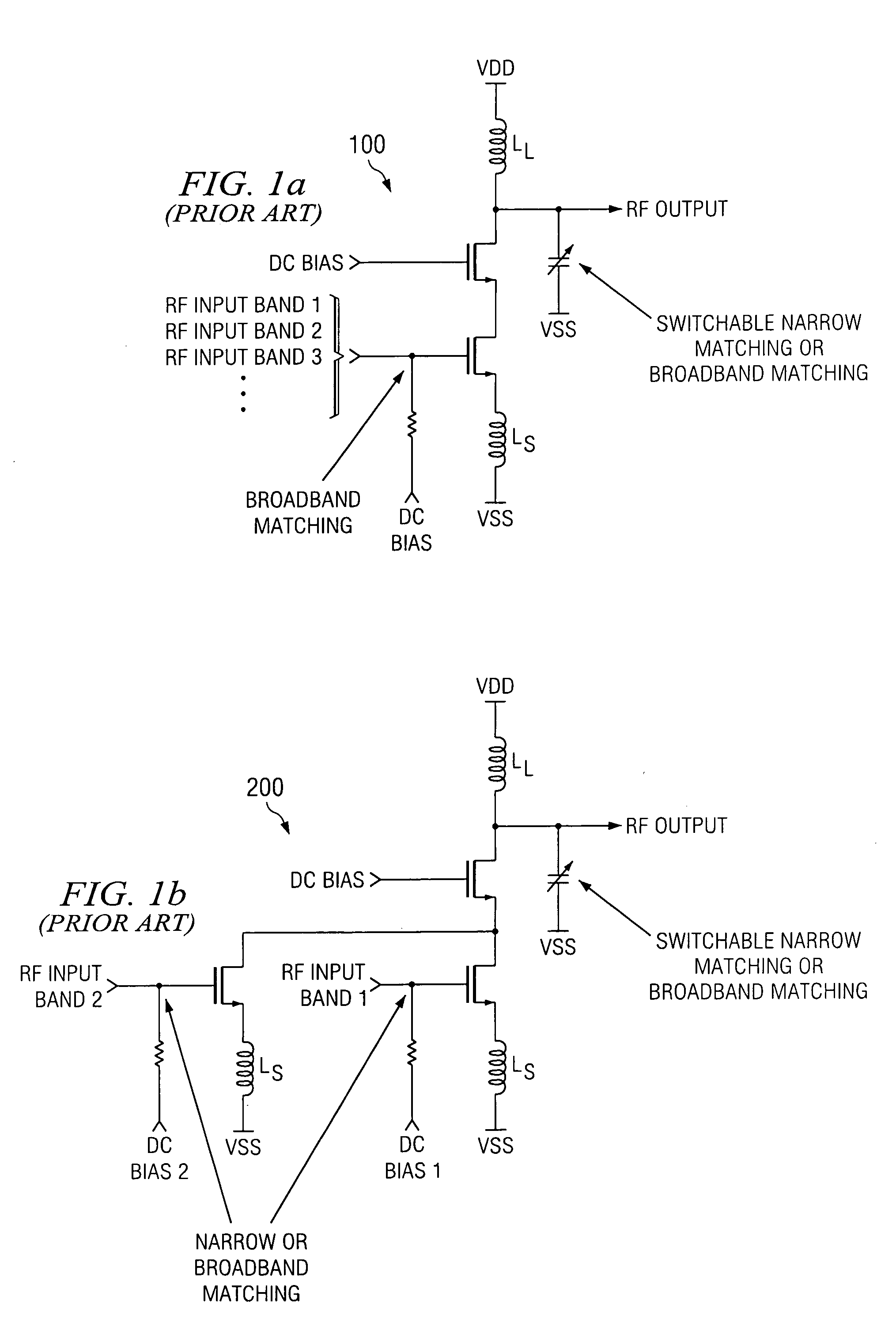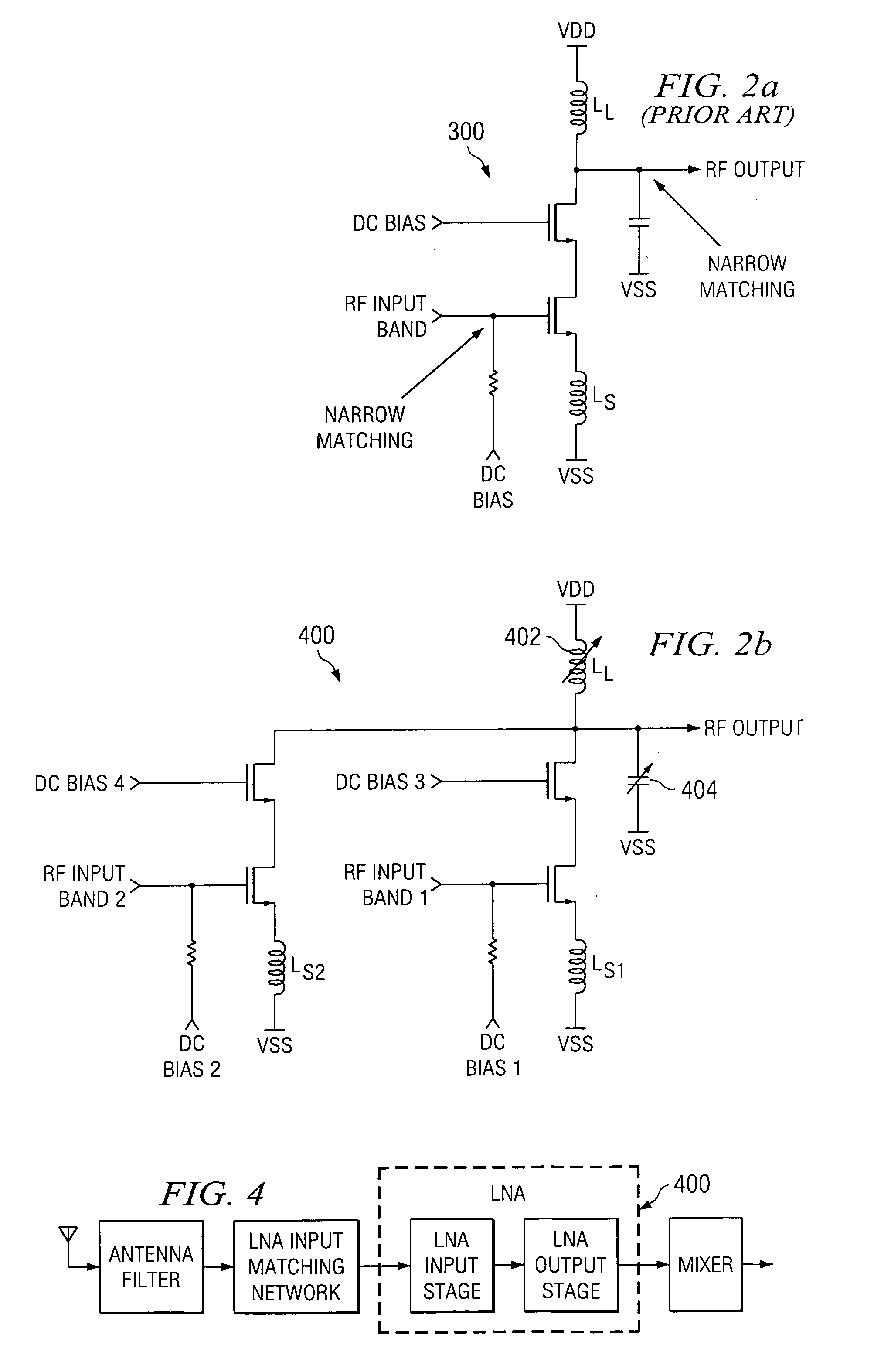Multi-band low noise amplifier system
a low-noise amplifier and multi-band technology, applied in the direction of low-noise amplifiers, amplifier combinations, amplifier modifications to reduce noise influence, etc., can solve the problems of increasing the cost per square millimeter of silicon, and significantly worsening the quality of metal interconnects, etc., to achieve less silicon area, eliminate additional insertion loss and noise figure, and increase/decrease the effective inductance
- Summary
- Abstract
- Description
- Claims
- Application Information
AI Technical Summary
Benefits of technology
Problems solved by technology
Method used
Image
Examples
Embodiment Construction
[0036]FIG. 2(a) illustrates a typical prior art single (narrow)-band LNA 300, while FIG. 2(b) illustrates a multi-band LNA circuit topology 400 according to one embodiment of the present invention. The circuit topology 400 can be easily extended to a differential LNA that will be discussed herein below in further detail following a detailed discussion of the circuit topology 400. FIG. 4 is a block diagram illustrating the signal flow through the LNA 400 depicted in FIG. 2(b), and is provided to enhance clarity and understanding of the embodiments described herein below.
[0037]The single (narrow)-band LNA 300 typically is employed on a PCB having separate antenna filters providing individual outputs for each frequency band. An individual input bondpad thus receives only one signal from one filter, which is then amplified without interfering with other signals. The source degeneration inductors, Lsn, where n is an integer, seen in FIG. 2(b) can be reduced to 1, depending upon the circu...
PUM
 Login to View More
Login to View More Abstract
Description
Claims
Application Information
 Login to View More
Login to View More - R&D
- Intellectual Property
- Life Sciences
- Materials
- Tech Scout
- Unparalleled Data Quality
- Higher Quality Content
- 60% Fewer Hallucinations
Browse by: Latest US Patents, China's latest patents, Technical Efficacy Thesaurus, Application Domain, Technology Topic, Popular Technical Reports.
© 2025 PatSnap. All rights reserved.Legal|Privacy policy|Modern Slavery Act Transparency Statement|Sitemap|About US| Contact US: help@patsnap.com



